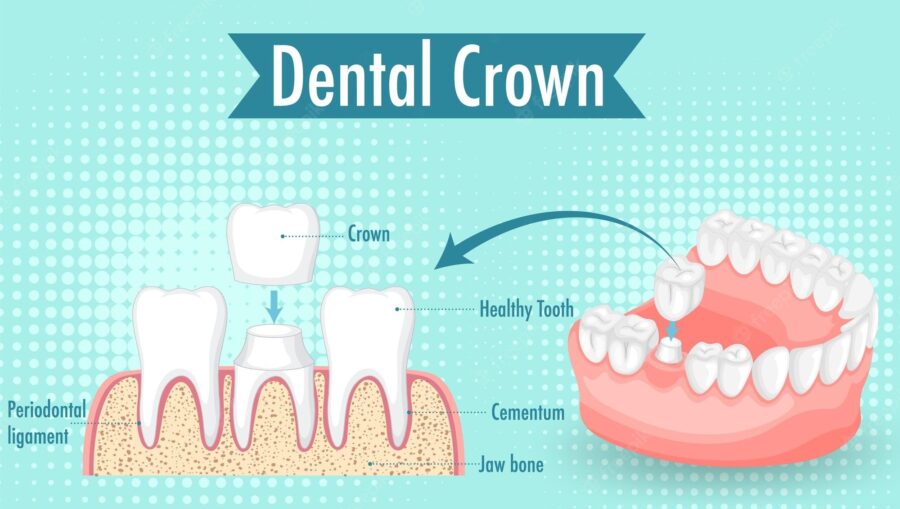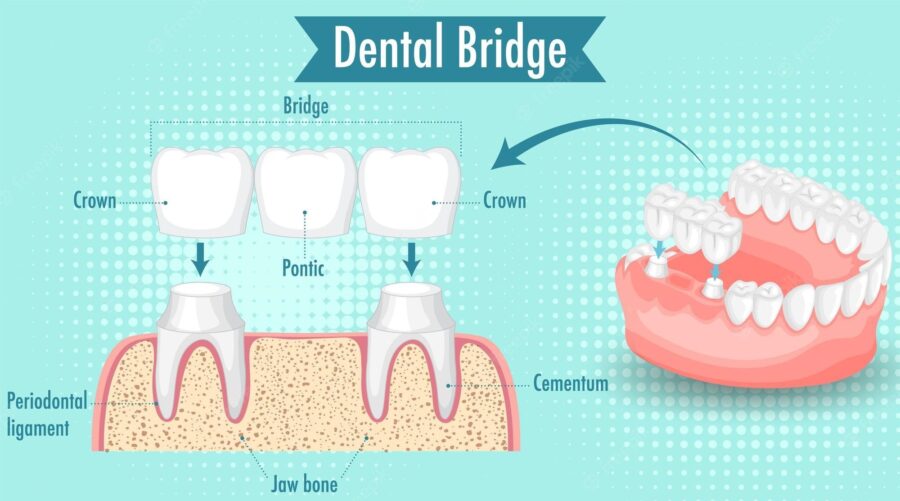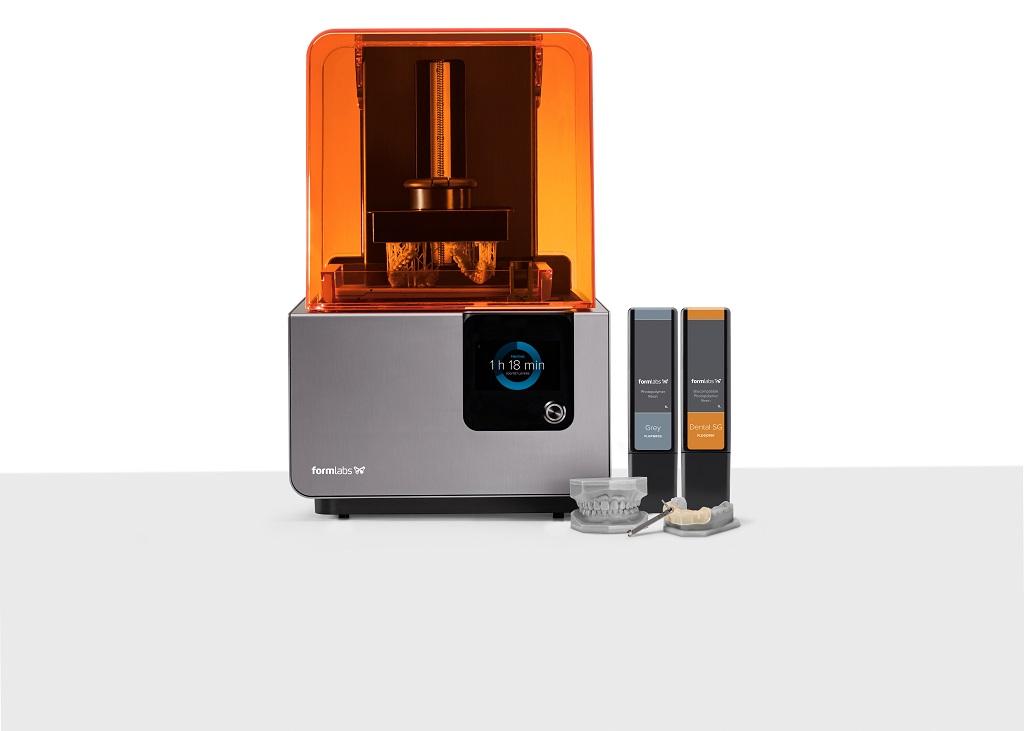The days of removing and replacing flawless dental restorations are long gone. Dentists may now conduct root canal therapy without affecting the strength and aesthetics of your crowns and bridges because to advances in technology and practices.Your dentist may successfully clean and seal the infected root canals by gaining access to them via the current restorations, guaranteeing long-term success and preserving the appearance of your smile.This article will examine the cutting-edge methods utilised in contemporary dentistry to carry out root canal therapy while maintaining the integrity of your crowns and bridges.
What are Intact Crowns and Bridges?
A crown is a tooth-shaped cap that is put over a broken tooth to enhance its look and restore its size, shape, and strength. However, a bridge is a dental device that attaches to the nearby healthy teeth or dental implants to replace one or more missing teeth. Crowns and bridges that are still in place and in excellent shape are referred to as intact restorations after root canal.
Role of Root Canal Treatment in Crowns & Bridges
The preservation of intact crowns and bridges depends heavily on root canal therapy. If left untreated, significant decay, fissures, trauma, or repeated dental operations may cause the pulp within a tooth to become infected or inflamed. This can cause excruciating pain and result in additional issues.
A root canal procedure is required in these situations to get rid of the diseased pulp, clean the canals, and seal them to stop reinfection. The dentist may provide root canal therapy while still using the original crowns and bridges, preventing the need to remove and swap out the restorations.


This preserves the stability and appearance of the patient’s smile while also saving time and resources. By merely treating the diseased pulp and the canals and leaving the undamaged crown or bridge alone, it enables a conservative approach to dental therapy.
Benefits of Root Canal Crowns
While it is more customary to conduct a root canal on a natural tooth, there are instances in which a tooth with an undamaged crown or that is a component of a dental bridge may also undergo root canal therapy. Here are some advantages of receiving root canal therapy while still having your crowns and bridges in place:
- Preservation of the current restoration: If you already have a dental bridge or crown, doing a root canal enables you to keep it in place. A root canal via the crown or bridge might be less difficult and expensive than removing and replacing them.
- Maintaining the tooth’s functionality: A root canal may keep a tooth from being pulled. This is necessary to preserve healthy dental function, which includes speaking and chewing.
- Aesthetic preservation: Preserving the tooth via root canal therapy may assist keep the look of your smile if the tooth with the crown or bridge is in a visible location of the mouth. A lost tooth replacement may need extra restorative procedures.
- Cost-effectiveness: Getting a root canal may be less expensive than having the tooth pulled and replaced with an implant, bridge, or denture. There are often fewer steps and faster recovery times.
- Preventing additional issues: If a tooth is diseased or damaged, it should be treated right once to avoid more serious dental issues such abscesses, gum infections, or bone loss. By addressing the root of the problem, root canal therapy avoids these consequences.
- Comfort and pain relief: A root canal procedure helps lessen the suffering brought on by an infected or inflamed tooth. The discomfort usually goes away when the injured pulp is removed and the tooth is sealed.
Common misconceptions about Root Canal Crowns
Despite the many advantages, there are some widespread misunderstandings about receiving root canal therapy while still having your crowns and bridges in place. One of the most pervasive myths is that having a root canal might damage or undermine the integrity of the current repair. This is not the case, however. Dentists may reach the canals while limiting any possible harm to the surrounding structure by using precise planning and access methods.
Another myth is that root canal therapy is less efficient than conventional methods while crowns and bridges are still in place. The success rates of root canal therapy using intact restorations, on the other hand, have been proven in trials to be at least as high as those of conventional methods. The dentist doing the treatment must be skilled and experienced, and they must employ cutting-edge methods and materials.
Process of Root Canal Treatment with Crowns & Bridge
It starts with a thorough inspection and assessment of the tooth and any prior restorations. The state of the restoration, the severity of the infection, and the eligibility of the tooth for the operation will all be evaluated by the dentist. The dentist will continue with accessing the canals via the current restoration after it is decided that root canal therapy with intact crowns and bridges is the best course of action.

To do this, a tiny access hole is made in the restoration, often towards the rear or base of the tooth where it is less noticeable. The diseased pulp will be carefully removed by the dentist, who will also use specialist tools to properly clean the canals.
The canals are filled with a biocompatible substance called gutta-percha after being cleansed, shaped, and sterilized. The canals are sealed by this substance, preventing reinfection. After that, a tooth-colored filling substance is used to close the access hole in the restoration, giving it a smooth and natural look.
Aftercare and Maintenance
To guarantee the lifespan and health of the treated tooth and the adjacent dental work, it is crucial to adhere to the recommended aftercare and maintenance procedures after receiving a root canal treatment with intact crowns and bridges.
You will get detailed post-operative instructions from your dentist, which you must carefully abide by. These guidelines could also include topics like nutrition limitations, dental hygiene, and pain management.
Mild sensitivity or discomfort during a root canal operation are usual. To alleviate discomfort, your dentist may suggest over-the-counter painkillers or write a prescription for medicine. Pay attention to their advice and take any prescription drugs exactly as instructed.
Be attentive of your diet, particularly in the days immediately after the root canal procedure. Avoid items that are hard or sticky. Avoid biting on foods that are sticky or hard since they may cause the crown or bridge to become loose or damaged.
Attend follow-up visits scheduled by your dentist to check on your recovery and make sure your treated tooth and dental work are operating correctly. As advised, show up for these appointments.
Success Rates and Long-Term Outcomes
The success rates of root canal therapy while crowns and bridges are still in place are on par with or even greater than those of conventional methods.
Numerous studies have shown great success rates for root canal therapy carried out via intact restorations, ranging from 87% to 98%. This is attributable to improvements in dental practitioners’ knowledge, materials, and methods.
Promising long-term results may be obtained with root canal therapy while crowns and bridges are still in place. Regular dental checkups and the right aftercare and maintenance greatly extend the life of the operation. The repaired tooth and the restoration may survive for many years, with proper dental hygiene. Regular checkups give patient a smile that is both functional and aesthetically beautiful.
Conclusion
Modern approaches to root canal therapy using intact crowns and bridges have several advantages for both the patient and the dental clinician. While maintaining the stability and beauty of the patient’s smile, it enables a less intrusive and economical treatment alternative. If you need root canal therapy but still have healthy crowns or bridges, it may be worthwhile to think about this contemporary method. Consult with our expert dentist Dr. Chirag Chamria about maintaining intact restorations to find the best course of action for your particular situation.






